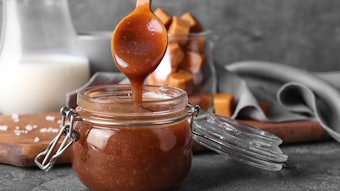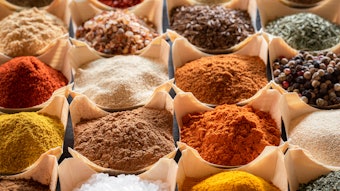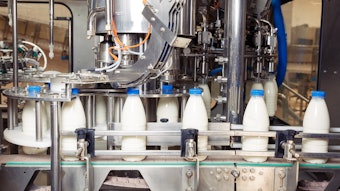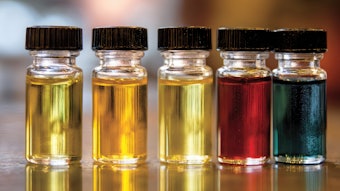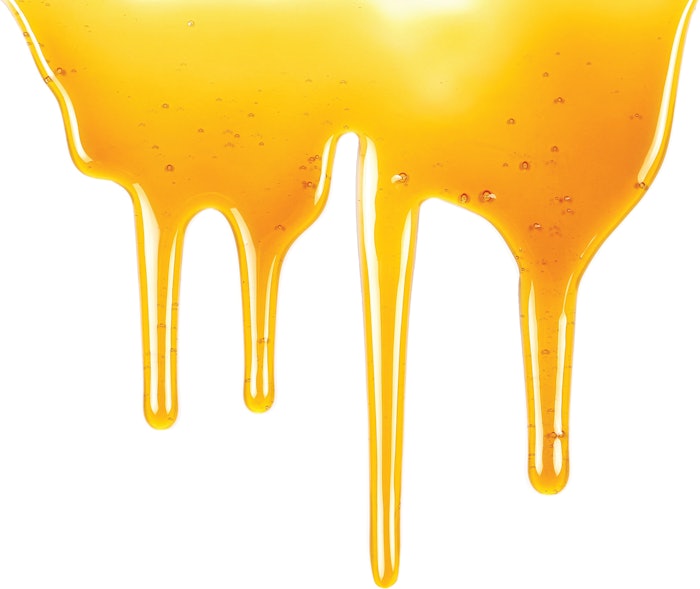
 Bell and jalapeno peppers fall into this category and benefit from levels of this ingredient ranging from 50 ppm to 100 ppm.AdobeStock
Bell and jalapeno peppers fall into this category and benefit from levels of this ingredient ranging from 50 ppm to 100 ppm.AdobeStock
Note that the dose rates given throughout this article are the levels suggested for use in flavors intended to be dosed at 0.05% in ready-to-drink beverages or in a simple bouillon.
Berry Flavors
Blackberry: When we look at potentially using 2,6,6-trimethyl cyclohex-2-ene-1,4-dione in berry flavors it is difficult to avoid a comparison with β-damascone. The damson note is an obvious similarity. Thankfully, it is not an either/or situation. The two chemicals work well in combination. A good starting point for this ingredient in blackberry flavors is 50 ppm.
Blackcurrant: The same comments hold for blackcurrant flavors. The ideal dose rate is a little lower, 30 ppm, and the combination works equally well.
Blueberry: With blueberry flavors it is not so important to use a combination. Fifty ppm of 2,6,6-trimethyl cyclohex-2-ene-1,4-dione is ideal, used alone.
Cranberry: 2,6,6-Trimethyl cyclohex-2-ene-1,4-dione adds depth and softness to all types of cranberry flavors at around 50 ppm.
Elderberry: Elderberry flavors are highly characterized and interesting, even if they are not yet especially popular. Fifty ppm of the ingredient fits in perfectly.
Gooseberry: Fifty ppm would be too much for delicate gooseberry flavors, but 20 ppm is close to ideal.
Raspberry: With raspberry flavors we are back to the decided advantage of using 2,6,6-trimethyl cyclohex-2-ene-1,4-dione in combination with either β-damascone or damascenone. Fifty ppm is a good level.
Redcurrant: Combinations are also helpful in redcurrant flavors and the ideal level is also similar, 50 ppm.
Strawberry: This is not such an obvious ingredient for strawberry flavors. Nevertheless, 20 ppm adds fresh, juicy nuances.
 Fifty ppm of this ingredient enhances the note of fresh juice in both orange and tangerine flavors.AdobeStock
Fifty ppm of this ingredient enhances the note of fresh juice in both orange and tangerine flavors.AdobeStock
Savory Flavors
Peppers: 2,6,6-Trimethyl cyclohex-2-ene-1,4-dione, in general terms, is not widely used in savor flavors. There are exceptions. The most obvious are vegetables that, in a strict botanical sense, should be classified as fruits. Bell and jalapeno peppers fall into this category and benefit from levels of this ingredient ranging from 50 ppm to 100 ppm.
Potato: Potatoes must be about as far away from being in the botanical definition of a fruit as it is possible to get. Despite this, a hint, around 20 ppm, of this raw material is helpful.
Seafood: Seaweed flavors are an obvious home for this distinctive chemical. One hundred ppm is a good starting point. Lower levels, around 30 ppm, can work well in all shellfish flavors.
Tomato: Tomatoes, like peppers, are really fruits. They gain authenticity from low additions, around 10 ppm.
Orchard Fruit Flavors
Apple: It can be quite a challenge balancing out the dominant fruity aliphatic esters in apple flavors. At one time α-damascone was a good option. Now 2,6,6-trimethyl cyclohex-2-ene-1,4-dione can be used in a similar way, at around 50 ppm.
Apricot, Nectarine and Peach: This raw material really comes into its own in the peach apricot category. It provides depth and juicy character at around 100 ppm in peach and apricot flavors. Nectarine is a bit more subtle and 50 ppm might be more appropriate.
Cherry: Cherry flavors vary dramatically, but 2,6,6-rimethyl cyclohex-2-ene-1,4-dione is invariably useful. Start at 50 ppm.
Damson: If ever there was a flavor where damascenone was the obvious driving force, it is damson. Even so, 300 ppm of 2,6,6-trimethyl cyclohex-2-ene-1,4-dione works miracles, used alongside damascenone and raises the flavor into a different dimension.
Fig: Much more modest levels are all that is needed in fig flavors. Twenty ppm subtly adds to the background and enhances realism.
Pear: Pear flavors can have much the same issues with excessive ester notes as apple flavors. Fifty ppm of 2,6,6-trimethyl cyclohex-2-ene-1,4-dione smooths things down.
Plum: Plum flavors are not a million miles away from damson flavors, so additions need not be modest. One hundred ppm is only a starting point.
Brown Flavors
Chocolate and Cocoa: 2,6,6-Trimethyl cyclohex-2-ene-1,4-dione is effective in both cocoa and chocolate flavors, adding complexity and authenticity. Eighty ppm is a good level in cocoa flavors, with lesser levels in different chocolate flavor styles.
Maple: Similar levels work well in all styles of maple flavors, blending well with the dominant maple lactone character.
Molasses and Brown Sugar: The same is true for molasses and brown sugar flavors, but the ideal levels are higher. Depending on the profile, from 200 ppm to 300 ppm add lift and realism.
Citrus Flavors
Grapefruit: 2,6,6-Trimethyl cyclohex-2-ene-1,4-dione is found widely in many citrus fruits in nature. As an added component, it enhances juice notes, which is often a big positive. Fifty ppm is an ideal level in grapefruit juice flavors.
Lemon: One hundred ppm is better in lemon juice flavors, having the added benefit of providing a distracting note to partially cover loss of citral.
Orange and Tangerine: Fifty ppm of this ingredient enhances the note of fresh juice in both orange and tangerine flavors.
Nut Flavors
Almond and Pistachio: Effective levels of this ingredient in nut flavors are quite modest, but the effect is to add noticeably to authenticity. Thirty ppm is a good starting point in almond and pistachio flavors.
Hazelnut and Peanut: Slightly lower levels, nearer 20 ppm, are all that is required in hazelnut and peanut flavors.
Walnut: Additions used in walnut flavors are the lowest of all the flavors in this category. Ten ppm is ideal.
Other Flavors
Cereals: All cereal flavors can benefit from this raw material, but the level depends very much on the profile. One hundred ppm can only be seen as a rough starting point and can be adjusted considerably up and down.
Chrysanthemum: 2,6,6-Trimethyl cyclohex-2-ene-1,4-dione is perfectly suited to chrysanthemum flavors and contributes to the recognition character. One thousand ppm works very well.
Honey: This ingredient is extremely effective in honey flavors and works well in all different floral categories. Three hundred ppm is generally a decent starting point.
Tamarind: Tamarind flavors are only a minor, but interesting, category. Fifty ppm works well to add realism.
Tea: 2,6,6-Trimethyl cyclohex-2-ene-1,4-dione can be very effective in every type of tea flavors, but the ideal level varies. Black tea is the leader, with an ideal level of 200 ppm. Red tea, such as Oolong, is second, with around 100 ppm. Green tea trails, with an ideal level of 50 ppm.

